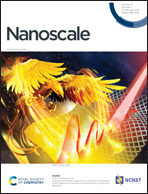Controlling the immobilization process of an optically enhanced protein microarray for highly reproducible immunoassay†
Abstract
By virtue of its high throughput multiplex detection capability, superior read-out sensitivity, and tiny analyte consumption, an optically enhanced protein microarray assay has been developed as a promising diagnostic tool for various applications, ranging from the field of pharmacology to diagnostics. However, so far, the development of an optically enhanced protein microarray (OEPM) toward widespread commercial availability is mainly hampered by insufficient detection reproducibility. Here, we develop an OEPM platform with an order of magnitude optical enhancement induced by the interference effect. High assay reproducibility of the OEPM is achieved by optimizing the protein immobilization schemes, linking to the surface energy of the substrate, surfactant-tuned wetting ability, and the washing and drying dynamics. As a result, smearing-free and uniform spot arrays with a coefficient of variation less than 7% can be achieved. Furthermore, we demonstrate the assay performance of the OEPM by detecting five biomarkers, showing an order of magnitude higher sensitivity, many-fold higher throughput, and 10 times less analyte consumption than those of the commercial enzyme-linked immunosorbent assay kits. Our results provide new insight for improving the reproducibility of OEPMs toward practical and commercial diagnostic assays.



 Please wait while we load your content...
Please wait while we load your content...